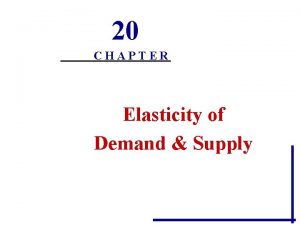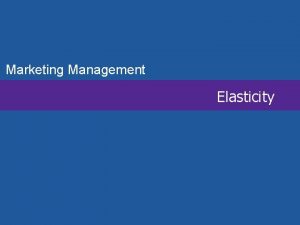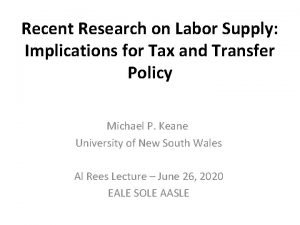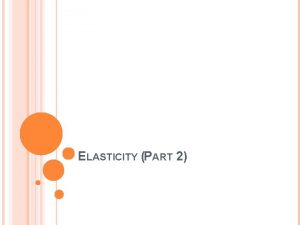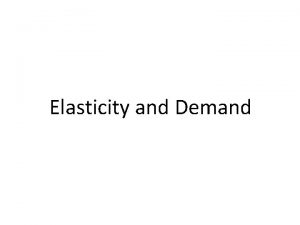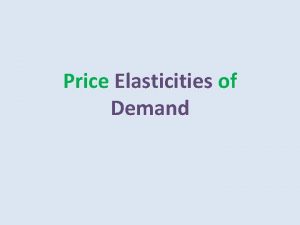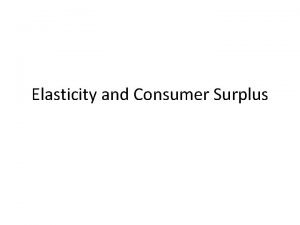Price Elasticity of Supply Elasticities Mr OGrady Price







- Slides: 7

Price Elasticity of Supply Elasticities Mr O’Grady

• Price S – perf. inelastic S - elastic S – perf. elastic S – unit elastic (straight line through the origin) Quantity

Factors determining PES Elasticities Mr O’Grady

Factors determining PES 1. The level of spare capacity: the extent to which a firm is operating below it’s maximum sustainable level of production and therefore how much spare resources it has (unused land, labour and capital) If the firm has plenty of spare capacity (or can rapidly increase its capacity), output can rise quickly and easily. The S curve will be elastic But if the firm is operating at full capacity (or if it has fixed capacity), output remains constant regardless of demand or price. The S curve will be inelastic 2. Stock levels: The amount of finished product a firm currently holds in its inventory If firms hold plenty of stocks in storage, they can respond much quicker and more easily to an increase in demand sell more units. The S curve will be elastic But if stocks are dwindling, firms will find it harder to increase sales when demand rises – so mainly price rises when there is an increase in demand. The S curve will be inelastic 3. The time period under consideration: how long the firm has to respond In the short-run, there may be a limit to how much extra output can be produced, e. g. Size of factory, cinema, stadium, etc, is fixed. Output of agricultural goods depends on the amount of seeds planted many months ago. The S curve will be inelastic Over time, firms can adjust their production capacity and output, e. g. Can build a larger factory, cinema, etc. Can plant more crop for next season if excess demand. The S curve will be elastic

Limitations of Elasticity Analysis Elasticities Mr O’Grady

Limitations of Elasticity Analysis 1. Problems with inaccurate or incomplete data collection: Analysis may mistakenly calculate incorrect values of elasticity that lead firms to make sub optimal decisions E. g. A firm seeking to increase its revenue may increase its prices if it believes it’s product has inelastic PED, but should it actually have elastic PED this would lead it to lose revenue. 2. Consumer sensitivity changes over time: The response of consumers to a change today may well differ to predictions based on their past responses E. g. A brand might not be able to rise its price so much in relation to substitute products if the perception of the brand’s differentiation has fallen 3. Elasticity of demand varies by region / time: Different Economies will likely react differently to changes and firms must assume that a change will have the same effect in all their markets. E. g. if incomes rise in a poor country, consumers may buy lots more goods that are necessities as their needs are the to be fully satiated, but if incomes rise in a rich country, consumers will likely spend more on buying goods which are more luxurious 4. Not all businesses wish to maximise revenue: Indeed most want to maximise profits, but other objectives may include sales maximisation to increase a firm’s market share or making a satisfactory amount of profit in order to achieve greater welfare. E. g. Whilst high revenues are important for high profits firm shouldn’t necessarily aim to produce at the quantity where its PED is unitary as in in order to do this it may incur considerable costs to produce this output and it may have been better to produce at a lower quantity.

Where next? Visit our website: www. smootheconomics. co. uk Find more resources, enrichment materials, details of courses, competitions, and more! Find Our socials: You. Tube: Smooth Economics Instagram: @smootheconomics Twitter: @Smooth. Economics Facebook: @Smooth. Economics


